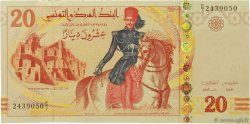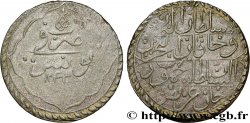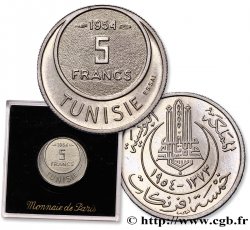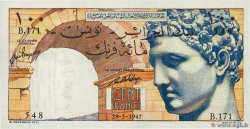Live auction - fme_971760 - TUNISIA Médaille, Ordre du Nichan al Iftikhar, Commandeur
Чтобы принять участие в торгах, вы должны войти в систему и стать подтвержденным участником аукциона. Войдите, чтобы сделать ставку. Ваш аккаунт будет подтвержден в течение 48 часов. Не ждите до закрытия торгов, чтобы зарегистрироваться.Сделав ставку на данный товар, вы вступаете в юридическое соглашение на покупку выбранного товара и нажатием кнопки «Сделать ставку» подтверждаете принятие вами условий интернет-аукционов cgb.fr.
Ставка может бить сделана только в полном эквиваленте евро. Торги закроются согласно времени, указанному в описании товара, все ставки, сделанные после закрытия торгов, учитываться не будут. Не следует откладывать предложение вашей ставки до последнего момента, так как система может не успеть обработать вашу заявку, и ваша ставка не будет принята. Более детальную информацию вы найдёте здесь: FAQ по интернет-аукционам.
Все ставки победителей подлежат комиссии 18%.
Все ставки победителей подлежат комиссии 18%.
| Оценить : | 200 € |
| Цена : | 115 € |
| Максимальная предлагаемая цена : | 115 € |
| Конец торгов : | 19 November 2024 16:05:44 |
| Участников : | 2 Участников |
Тип Médaille, Ordre du Nichan al Iftikhar, Commandeur
Дата: n.d.
Металл: silver
Диаметр: 123 mm
Ориентация осей монеты: 12 h.
Вес: 68,27 g.
Век: lisse
Пуансон: Tête de sanglier
Комментарии о состоянии
Bel exemplaire avec quelques traces de nettoyage au revers
Происхождение:
Collection Famille D.
Лицевая сторона
Аверс: легенда: ANÉPIGRAPHE.
Аверс: описание: Caractères dans un médaillon central.
Обратная сторона
Реверс: легенда: LISSE.
Реверс: Описание: (marque ou poinçon dans le champ du médaillon).
Комментарий
Diamètre du médaillon : 29 mm de l’étoile : 58 mm, avec la bélière en forme de noeud : 93,5 mm. Poinçon tête de sanglier visible sur l’anneau de suspension du ruban et sur l’anneau de suspension de l’étoile.
Ruban vert à 4 rayures rouges long d’environ 45 cm (sans compter les ficelles d’attache).
Le poids inclut celui du ruban.
Exemplaire émaillé de rouge et vert avec des rayons ciselés à facette entre chaque bras, le médaillon central porte des caractères arabes sur un fond d’émail vert. Il est tenu par un noeud en fleur et retenu par un ruban jaune et vert qui s’accroche grâce à une attache métallique.
Cette décoration avait été instituée en 1835 par Ahmad I ibn Mustafa, Bey de Tunis et réformé en 1857 par son successeur Muhammad II ibn al-Husayn.
Diameter of the medallion: 29 mm, of the star: 58 mm, with the bow-shaped bail: 93.5 mm. Boar's head hallmark visible on the ribbon suspension ring and on the star suspension ring. Green ribbon with 4 red stripes, approximately 45 cm long (not including the attachment strings). The weight includes that of the ribbon. Red and green enameled example with faceted chiseled rays between each arm, the central medallion bears Arabic characters on a green enamel background. It is held by a flower knot and retained by a yellow and green ribbon which is attached with a metal fastener. This decoration was instituted in 1835 by Ahmad I ibn Mustafa, Bey of Tunis and reformed in 1857 by his successor Muhammad II ibn al-Husayn
Ruban vert à 4 rayures rouges long d’environ 45 cm (sans compter les ficelles d’attache).
Le poids inclut celui du ruban.
Exemplaire émaillé de rouge et vert avec des rayons ciselés à facette entre chaque bras, le médaillon central porte des caractères arabes sur un fond d’émail vert. Il est tenu par un noeud en fleur et retenu par un ruban jaune et vert qui s’accroche grâce à une attache métallique.
Cette décoration avait été instituée en 1835 par Ahmad I ibn Mustafa, Bey de Tunis et réformé en 1857 par son successeur Muhammad II ibn al-Husayn.
Diameter of the medallion: 29 mm, of the star: 58 mm, with the bow-shaped bail: 93.5 mm. Boar's head hallmark visible on the ribbon suspension ring and on the star suspension ring. Green ribbon with 4 red stripes, approximately 45 cm long (not including the attachment strings). The weight includes that of the ribbon. Red and green enameled example with faceted chiseled rays between each arm, the central medallion bears Arabic characters on a green enamel background. It is held by a flower knot and retained by a yellow and green ribbon which is attached with a metal fastener. This decoration was instituted in 1835 by Ahmad I ibn Mustafa, Bey of Tunis and reformed in 1857 by his successor Muhammad II ibn al-Husayn








 Cообщить об ошибке
Cообщить об ошибке Распечатать страницу
Распечатать страницу Отправить мой выбор
Отправить мой выбор Задать вопрос
Задать вопрос Consign / sell
Consign / sell
 Информация
Информация









